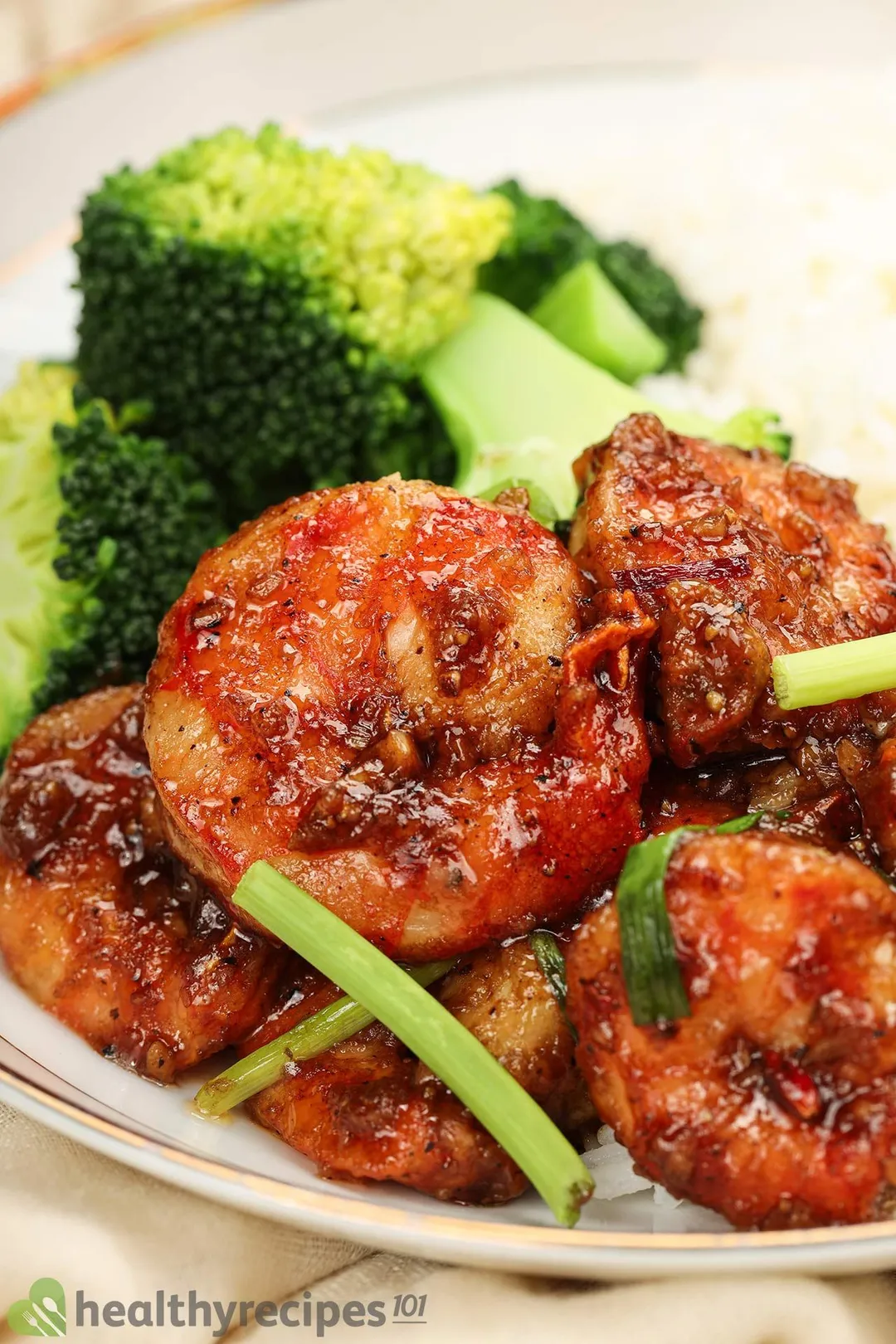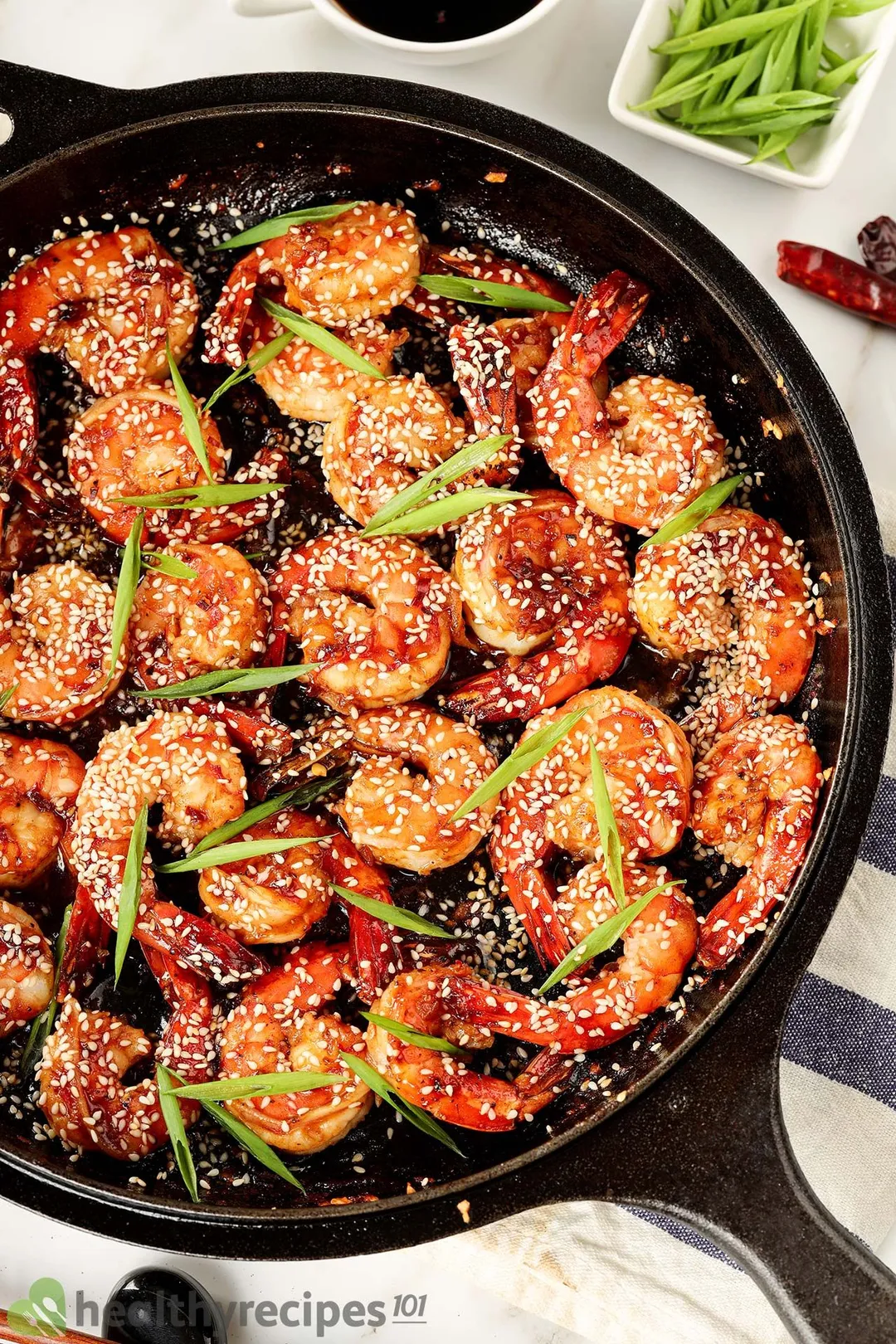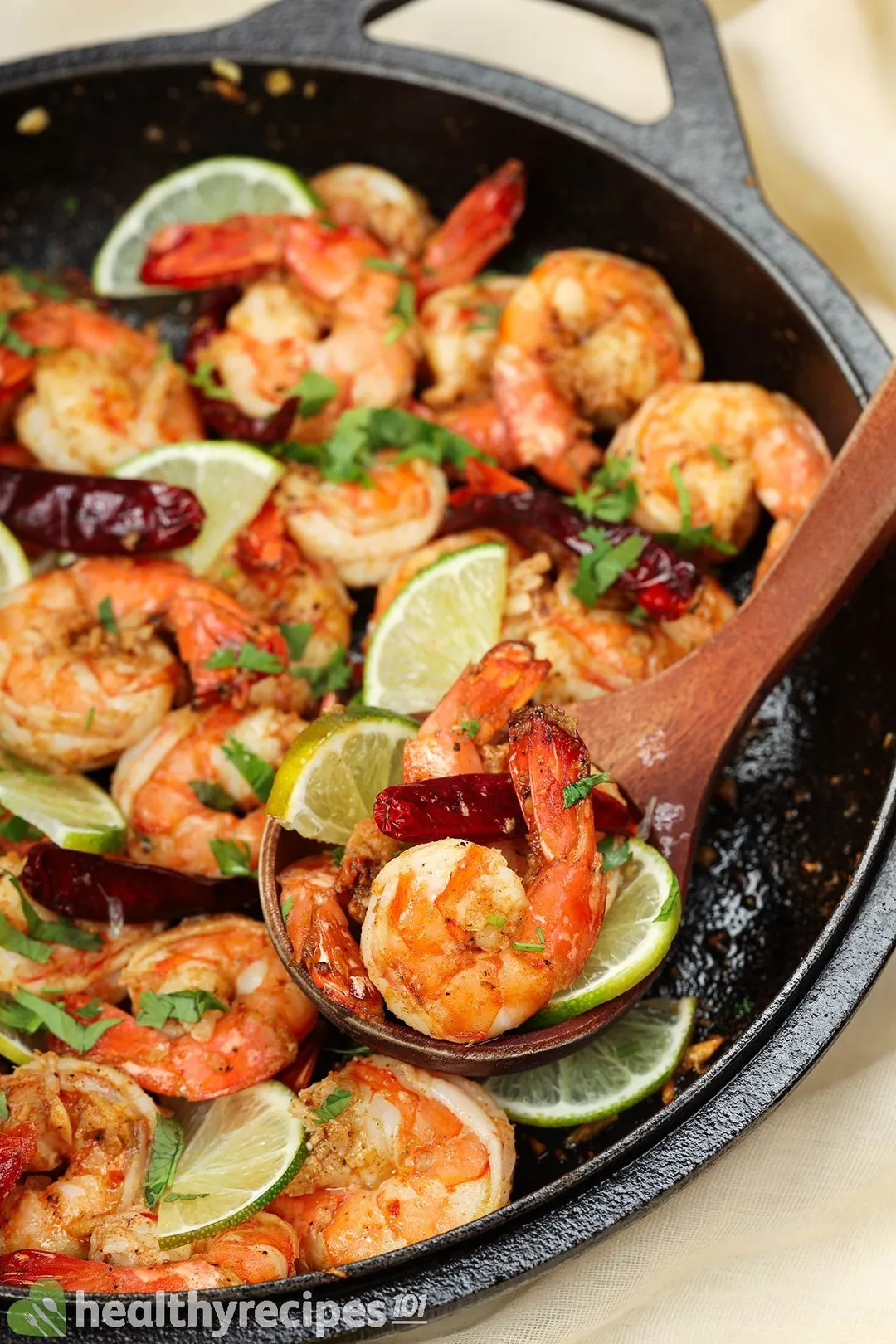Our Mongolian shrimp recipe whips up a flavorful, crunchy shrimp dish that’s served with rice and steamed broccoli. It can be made ahead of time and saved for the next day’s lunch.
Is Mongolian Shrimp Healthy?
Yes, our Mongolian shrimp recipe makes a healthy meal.
First of all, shrimp is a good source of protein because, unlike meat, most of its fats are unsaturated fats. They also contain omega 3s, 6s, and 9s, which not only aid in controlling your bad cholesterol level but also benefit your brain health as well.
The shrimp is often served with rice and cooked vegetables, good sources of complex carbs and micronutrients. We are using broccoli, which contains lots of vitamin C, iron, magnesium, and other crucial nutrients.
We portion the meal so that each serving contains around 500 calories, 1 g saturated fats, 554 mg sodium, and about 2 g added sugar. These numbers indicate that this recipe complies with our healthy eating guidelines and the USDA’s recommendations.
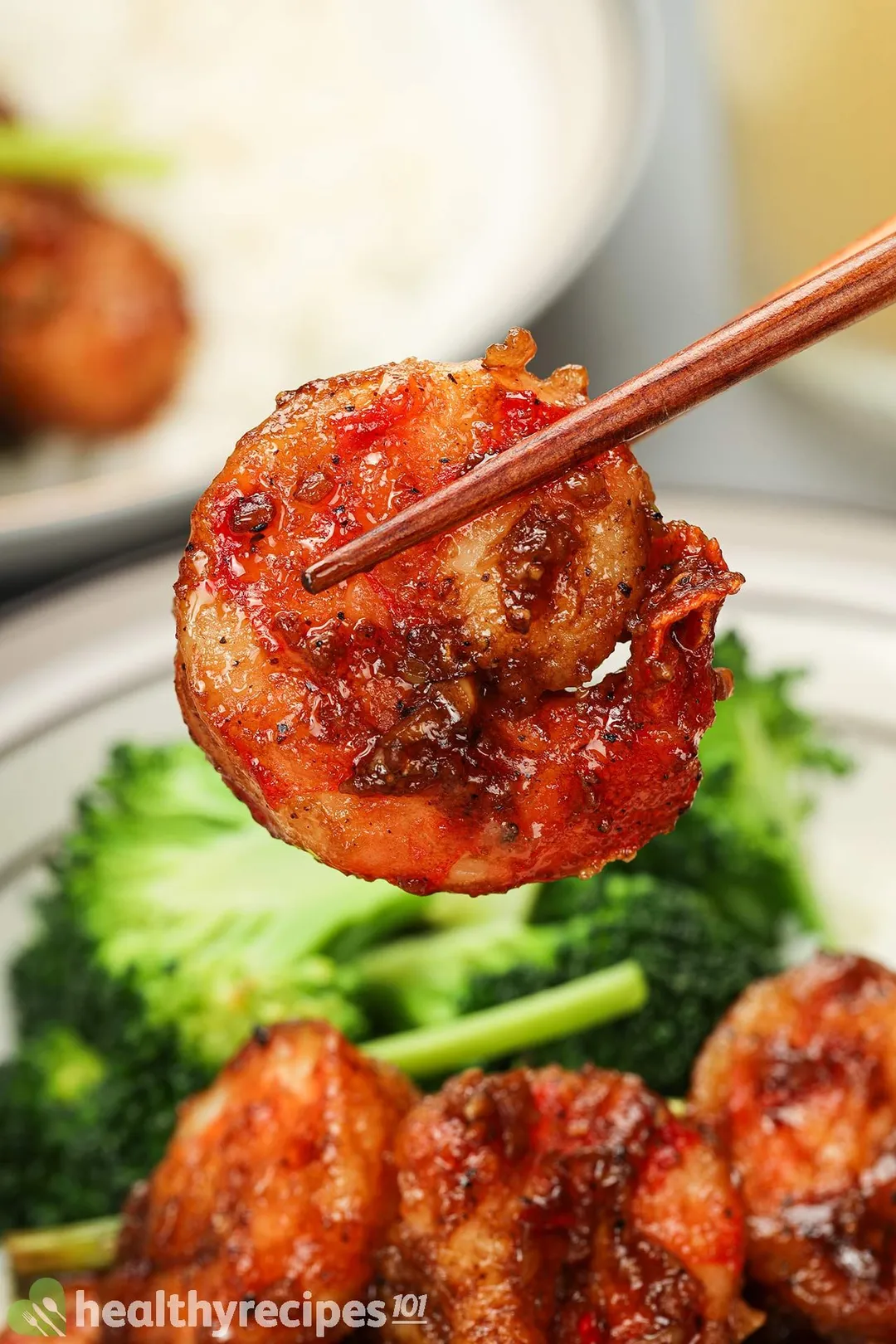
Although these shrimp are deep-fried, they can still fit a healthy diet if they’re done the right way. We used an oil with a high smoke point and neutral taste (canola oil). To fry the shrimp, scoop them out when they’re golden, and lay them out on paper towels to blot off excess oil.
Ingredients You Will Need
Our Mongolian shrimp recipe calls for peeled shrimp, cooked rice, broccoli, and several condiments/seasonings:
1. Mongolian Sauce for Shrimp
Garlic, ginger, soy sauce, sugar, and hoisin sauce are the main ingredients, providing a balance in flavor and aroma. It's also thickened with a cornstarch slurry, so it coats the shrimp better.
If you want this dish to be spicy, you can always add some Sriracha or Tabasco to the mix, but not too much because they contain sodium. Instead, we used some red pepper flakes, which gave the meal a finer appearance.
You can find other variations of this Mongolian sauce in our Mongolian Beef Recipe and Air Fryer Mongolian Chicken Recipe.
2. Shrimp
For recipes that serve shrimp with rice, we often go for small- to medium-sized shrimp. The smaller they are, the more you can pack in, making it look like you get more shrimp per bite.
Still, if you prefer larger shrimp, they work just as well.
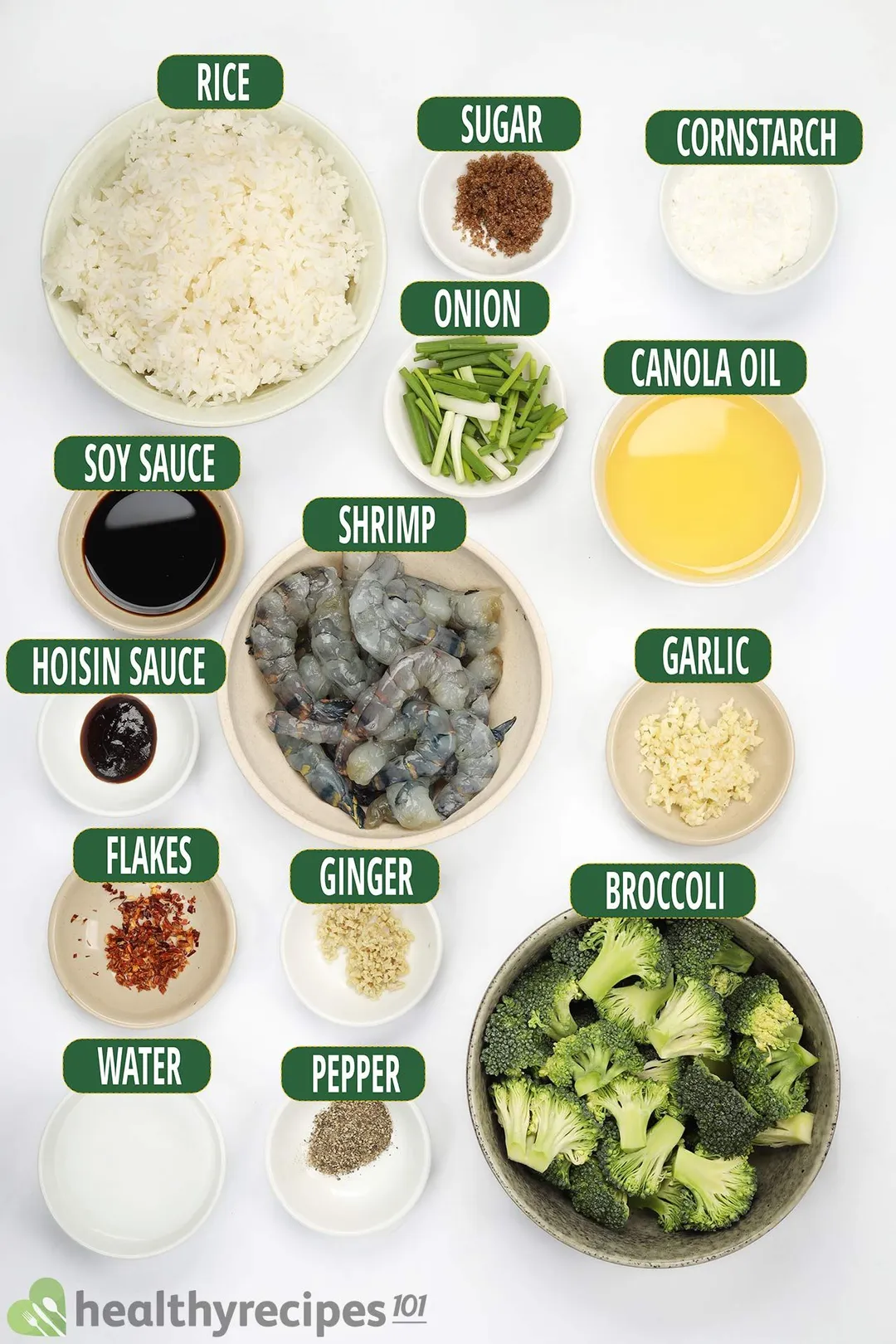
3. Vegetable
We try to sneak some cooked greens into most of our Chinese dishes, and for today's recipe, it's broccoli. All it needs is a simple 2-minute blanch.
4. Cooked Rice
As is customary, this meal is served with medium-grain white rice. If you want extra vitamins and minerals, you can replace it with a whole-grain alternative.
You should have some rice ready before preparing the shrimp because this recipe will require your full attention. If necessary, consider grabbing some frozen rice packets at the grocery store.
5. Can You Cook Frozen Shrimp?
Rock-hard frozen shrimp are not suitable for our Mongolian shrimp recipe, but they work fine if you thaw them first. Place your shrimp in a Ziploc bag, remove as much air as possible, submerge the bag in a bowl of water, and allow it to sit for 20 minutes. The shrimp should be pliable and ready to cook (or peel).
Cold shrimp demand extra attention while frying. You don’t want to crowd the pan and lower the oil’s temperature too much. Our next section will discuss in detail how to fry cold shrimp.
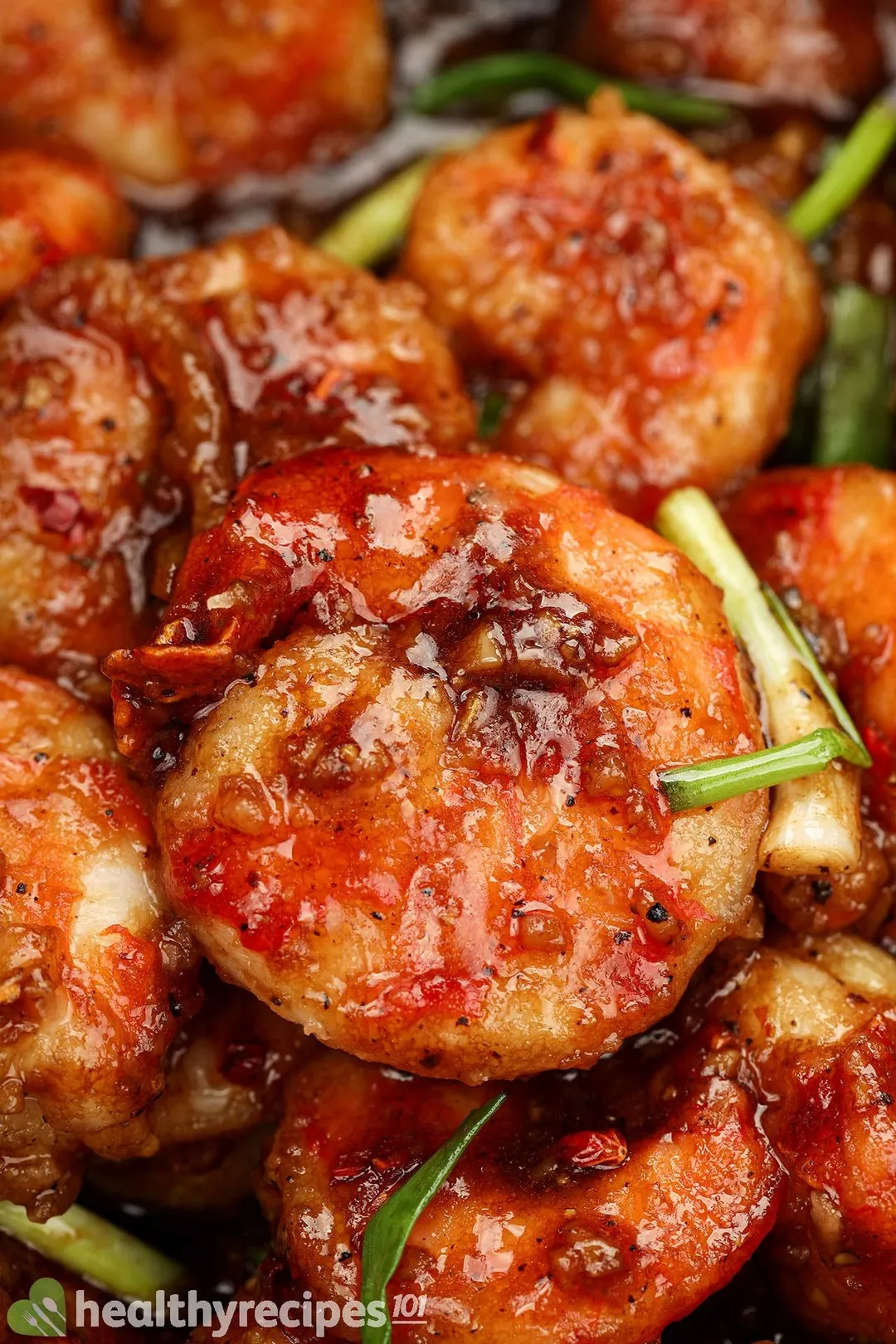
How Long Can Cooked Shrimp Stay in the Fridge?
Properly stored, cooked seafood will generally last for up to 4 days in the fridge. Details on storage are below.
Storage and Reheating the Leftover
The shrimp, sauce, rice, and vegetables should be stored in separate containers. We use air-tight containers, clean bowls covered with plastic wrap, or Ziploc bags.
At a maximum, each ingredient can be stored for the following time periods:
- Rice: 5 days in the fridge or 3 months in the freezer.
- Shrimp: 4 days in the fridge or 3 months in the freezer.
- Sauce: 5 days in the fridge or 3 months in the freezer.
- Broccoli: 5 days in the fridge (don’t freeze your cooked broccoli).
To reheat:
- Rice: stir it in a non-stick pan over low heat with about 2 tbsp water and turn the heat off when steam appears. Alternatively, microwave with 2 tbsp water for 1 minute if refrigerated, 3 minutes if frozen.
- Shrimp: if refrigerated, fry in hot oil for 1 minute or in the air fryer for 3-4 minutes. Frozen shrimp can take 2-6 minutes depending on size and reheating method.
- Sauce: simmer over low heat until it bubbles. Toss the shrimp with this sauce before serving.
- Broccoli: no need to reheat.
What to Serve With
This dish is best paired with a soup and drink. We thought these were an ideal combination:
- Mongolian Shrimp
- Winter Melon Meatball Soup
- Pear Juice
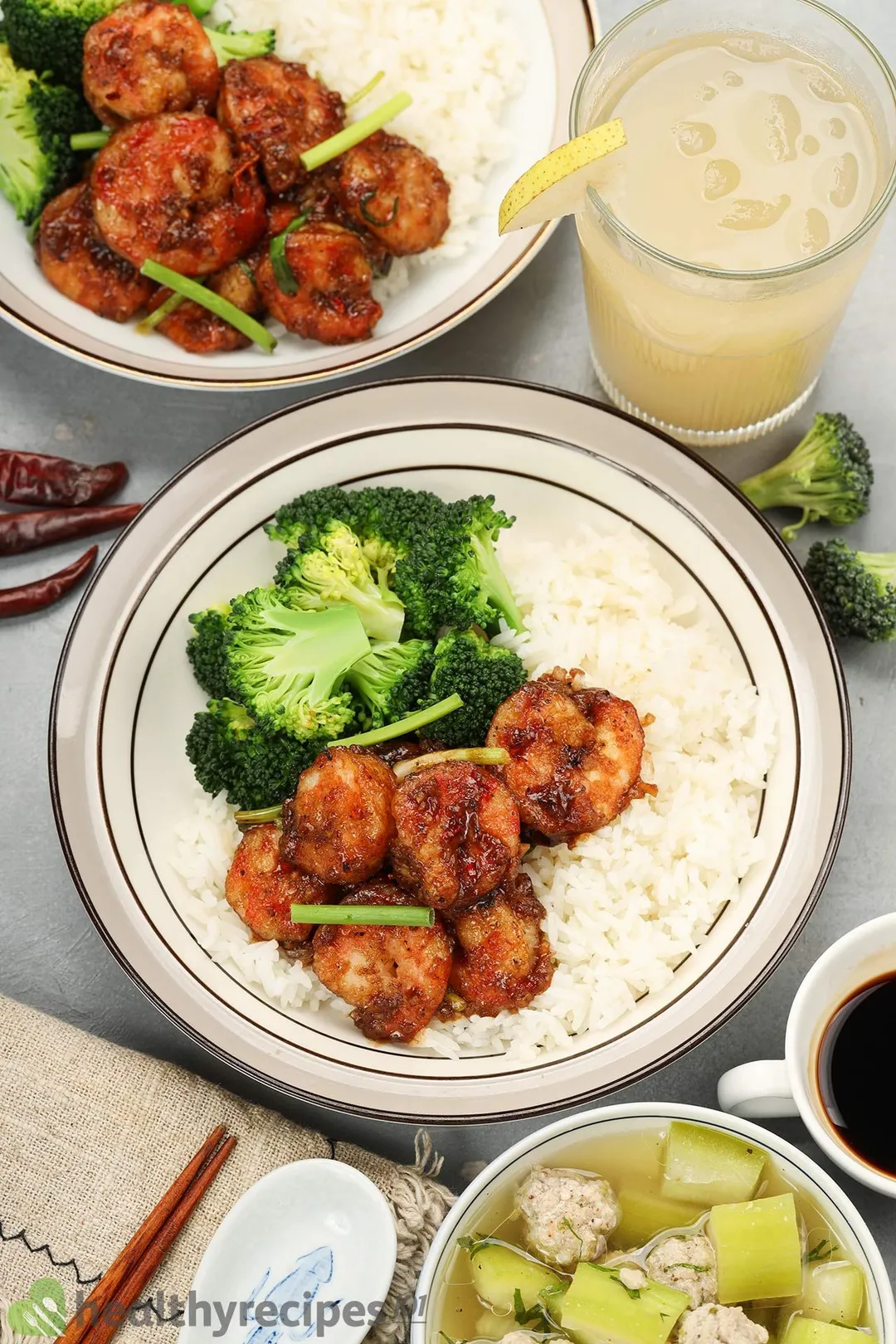
You May Also Like
Mongolian Shrimp Recipe
Our Mongolian shrimp recipe makes a delicious meal of crispy, flavorful shrimp served with cooked rice and broccoli. It all comes together in 30 minutes.
- cook TIME 25 mins
- prep TIME 5 mins
- total TIME 30 mins
- COURSE Main Course
- CUISINE Asian, Mongolian
- SERVINGS servings
- CALORIES 504 kcal
INGREDIENTS
- 12 oz peeled shrimp (from 24 oz whole)
- 8 oz broccoli (cut into florets)
- 3 1/2 cups cooked medium-grain rice
- 1/4 cup green onions (chopped)
- 1/4 cup water
- 1/4 cup cornstarch (save 1 tsp for the sauce)
- 1 cup canola oil (save 1 1/2 tbsp for the aromatics *)
- 2 tbsp reduced-sodium soy sauce
- 1 tbsp garlic (minced)
- 2 tsp brown sugar
- 1 tsp hoisin sauce
- 1/2 tsp ground black pepper
- 1 tsp ginger (minced)
- 1/2 tsp red pepper flakes
INSTRUCTIONS
Combine the sauce ingredients in a bowl: 1/4 cup water, 2 tbsp soy sauce, 2 tsp brown sugar, 1 tsp cornstarch, 1 tsp hoisin sauce, and 1/2 tsp ground black pepper. Set aside.
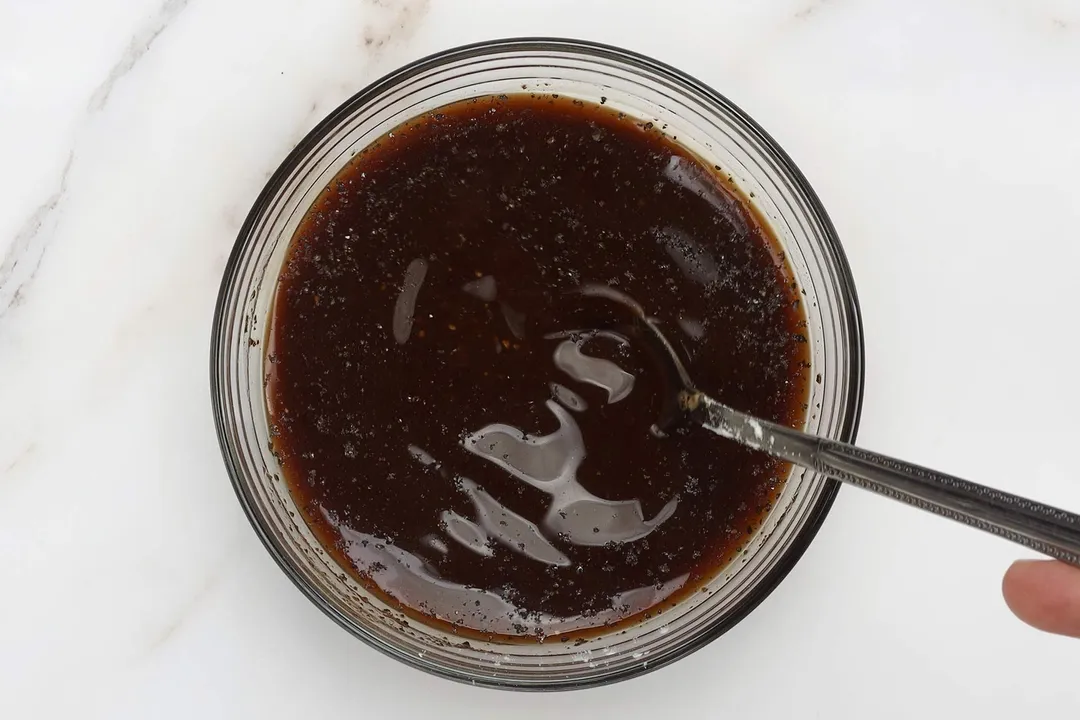
Bring a pot of water to a boil. Blanch 8 oz broccoli for 2 minutes, then shock them in cool water. Leave to dry in a colander.
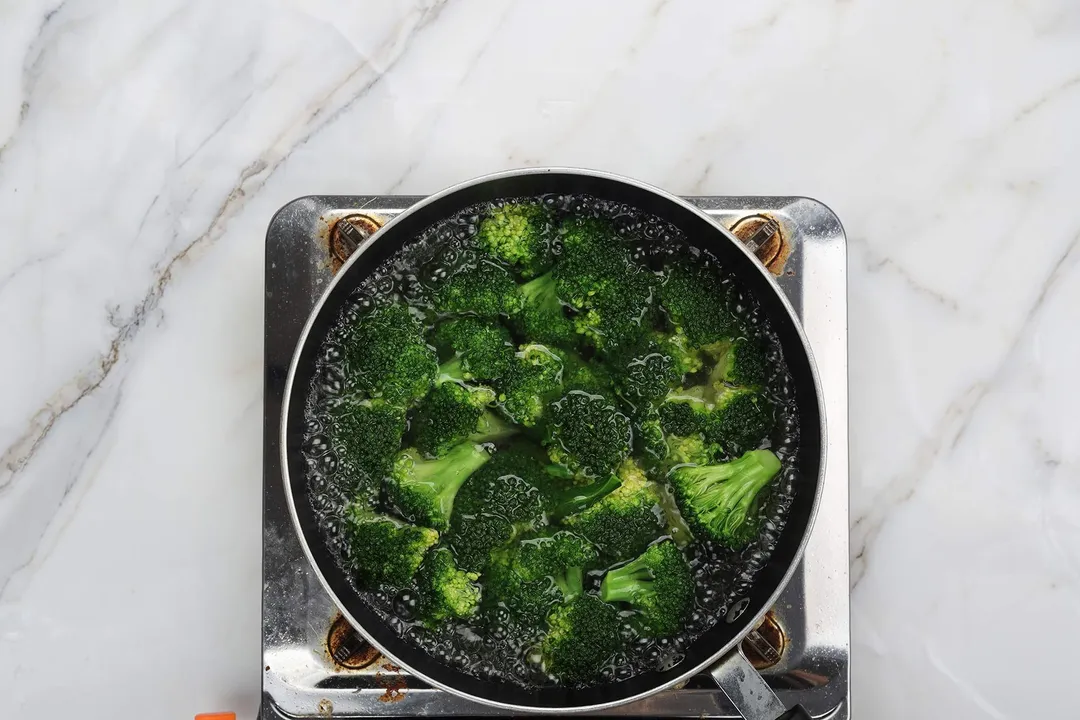
Toss 12 oz peeled shrimp with the remaining cornstarch (less than 1/4 cup).
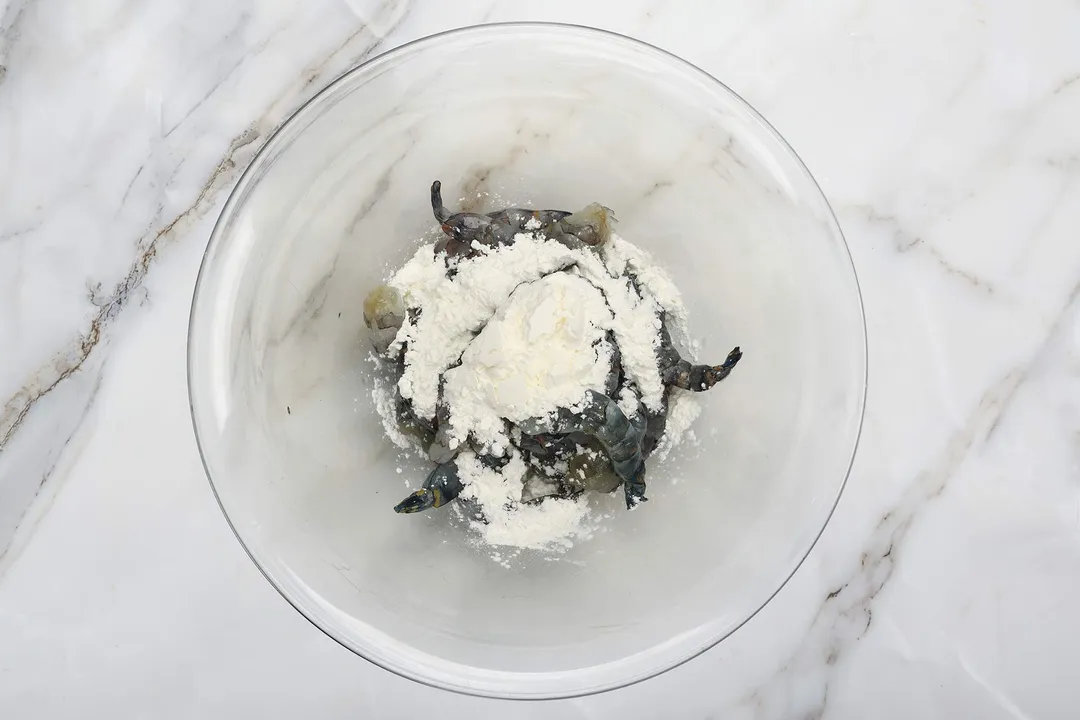
Pour 1 cup canola oil into a non-stick frying pan and scoop out 1 1/2 tbsp to save for later. Heat the oil over medium heat for about 2 minutes. Shake each shrimp to remove excess flour, then gently place each one into the oil. Try not to crowd the pan. Scoop the shrimp out when golden brown (about 2 minutes for each). Place them into a bowl lined with paper towels to blot off excess oil.
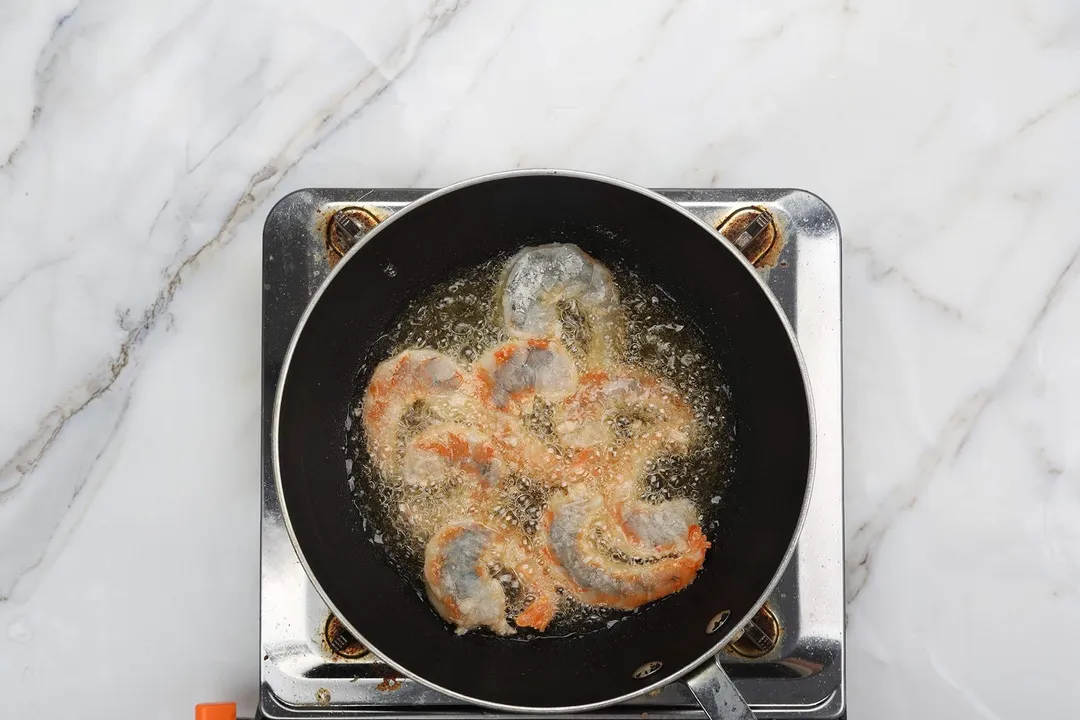
Add the 1 1/2 tbsp oil you saved earlier to a new, clean non-stick frying pan. Heat it over medium heat and sauté 1 tbsp garlic and 1 tsp ginger for about 30 seconds or until fragrant.
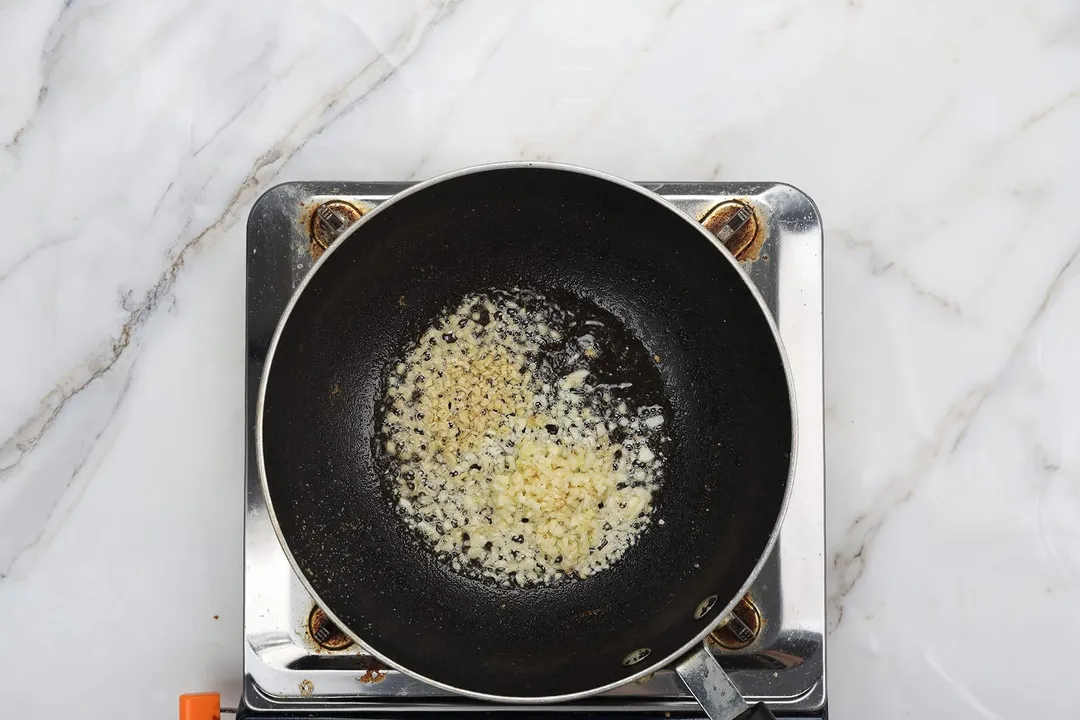
Stir the sauce mixture in and turn the heat down to simmer. Once the sauce is reduced (about 1 minute), you have two options: turn off the heat if you’re not ready to serve right away, or toss this sauce with the fried shrimp.
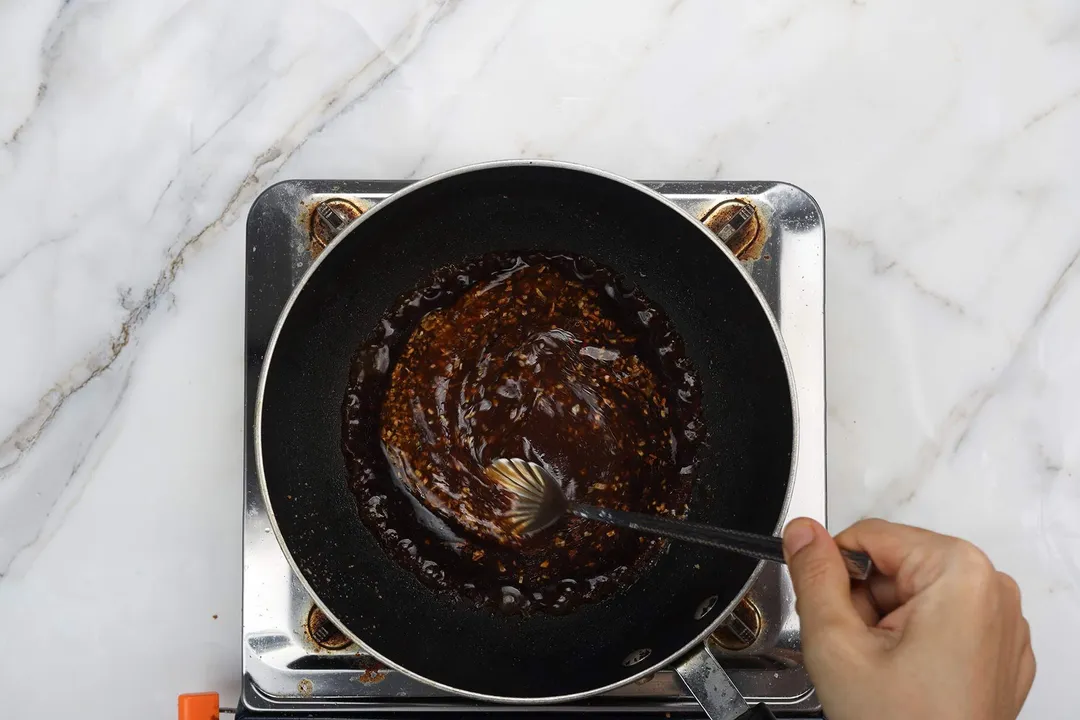
Toss the shrimp and 1/4 cup chopped green onions with the sauce just prior to serving.
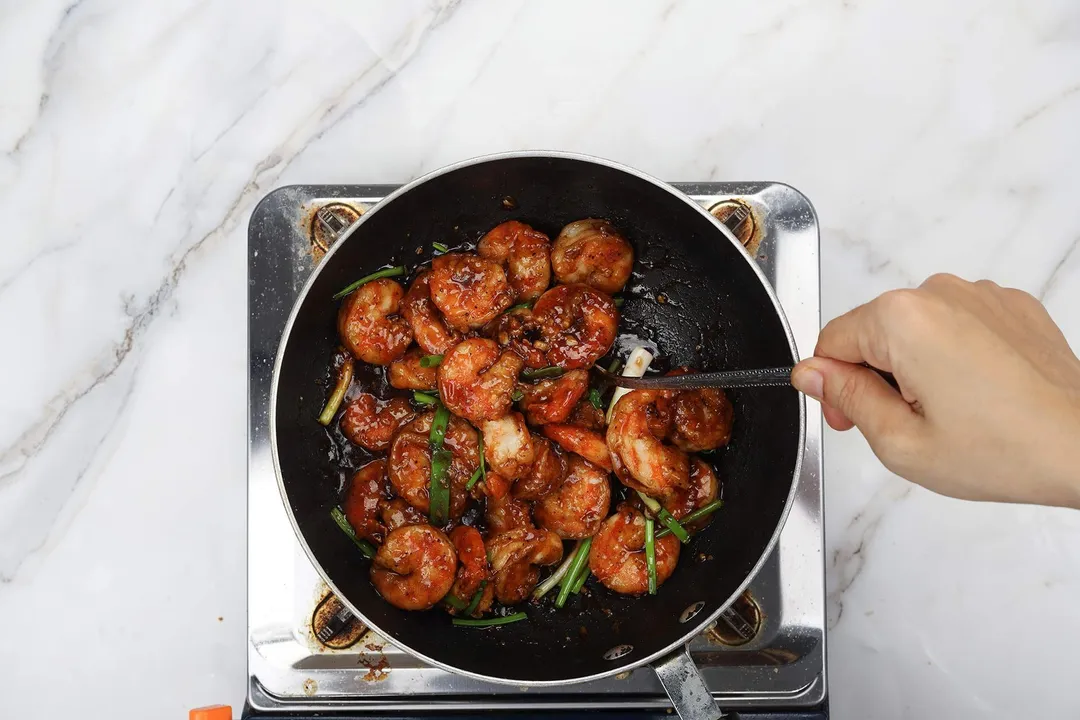
Once the shrimp is coated, sprinkle red pepper flakes on top. Serve with 3 1/2 cups cooked rice and cooked broccoli.
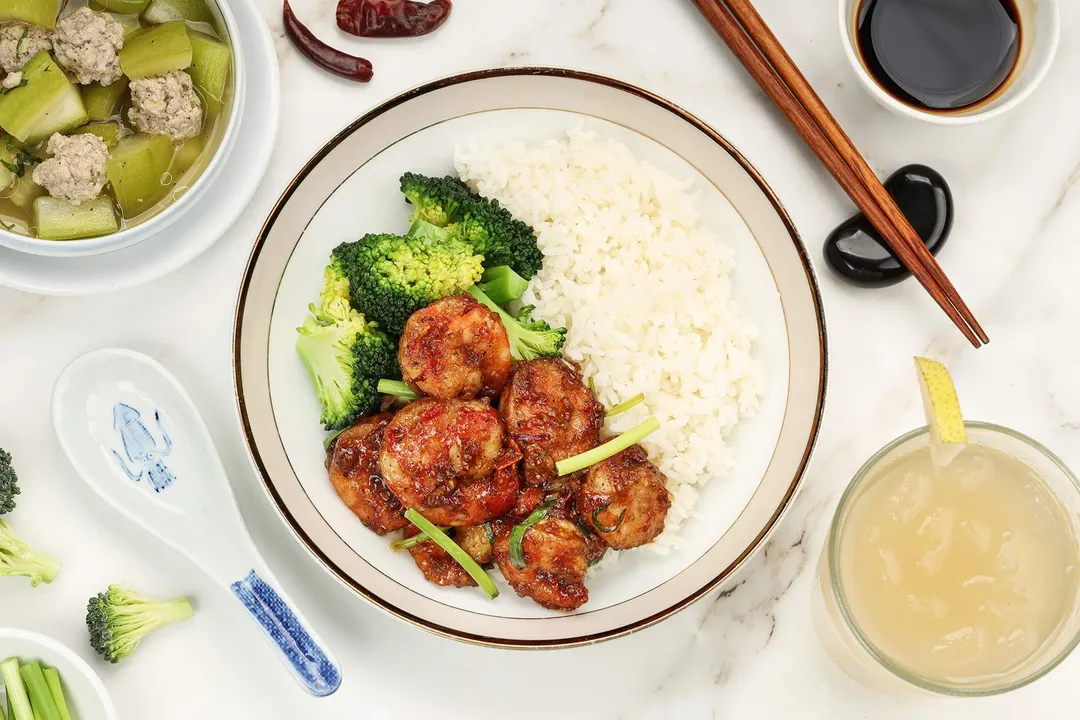
(*) Only a part of the frying oil will end up in the final product, and we have calculated nutritional values based on that amount. The whole amount is needed for the cooking process, but what actually ends up being consumed is 1 tablespoon of oil, plus another 1 and a half for sauteing the aromatics.
NUTRITION
Tuyet Pham
Head Chef, Culinary ConsultantLuna Regina
Writer, AuthorNatalie Butler, RD, LD
Nutrition Reviewer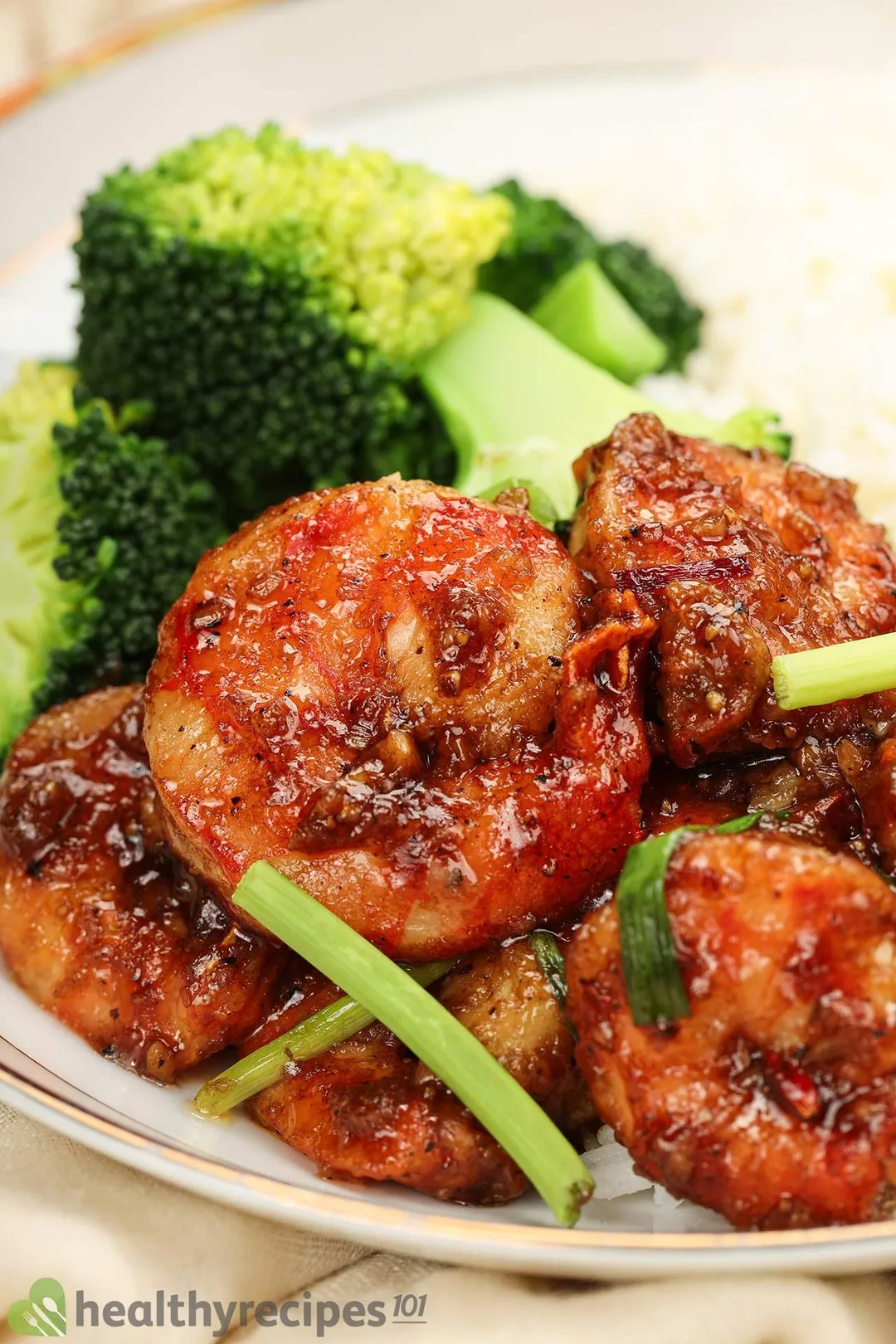
- EdenFirst, i love the photos, and i thought this recipe was absolutely beautiful.
- GibbensictSweet and spicy Mongolian shrimp.
